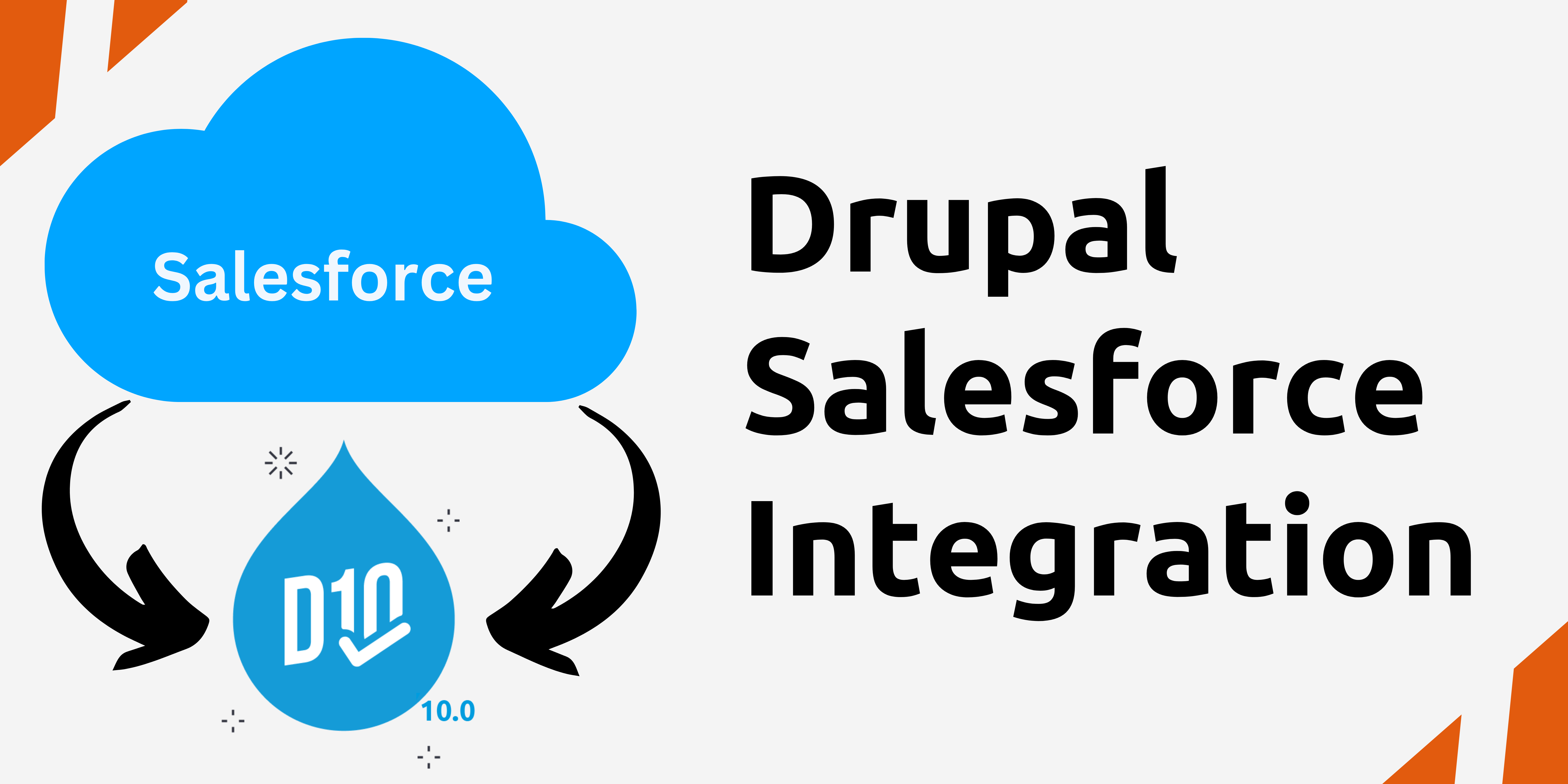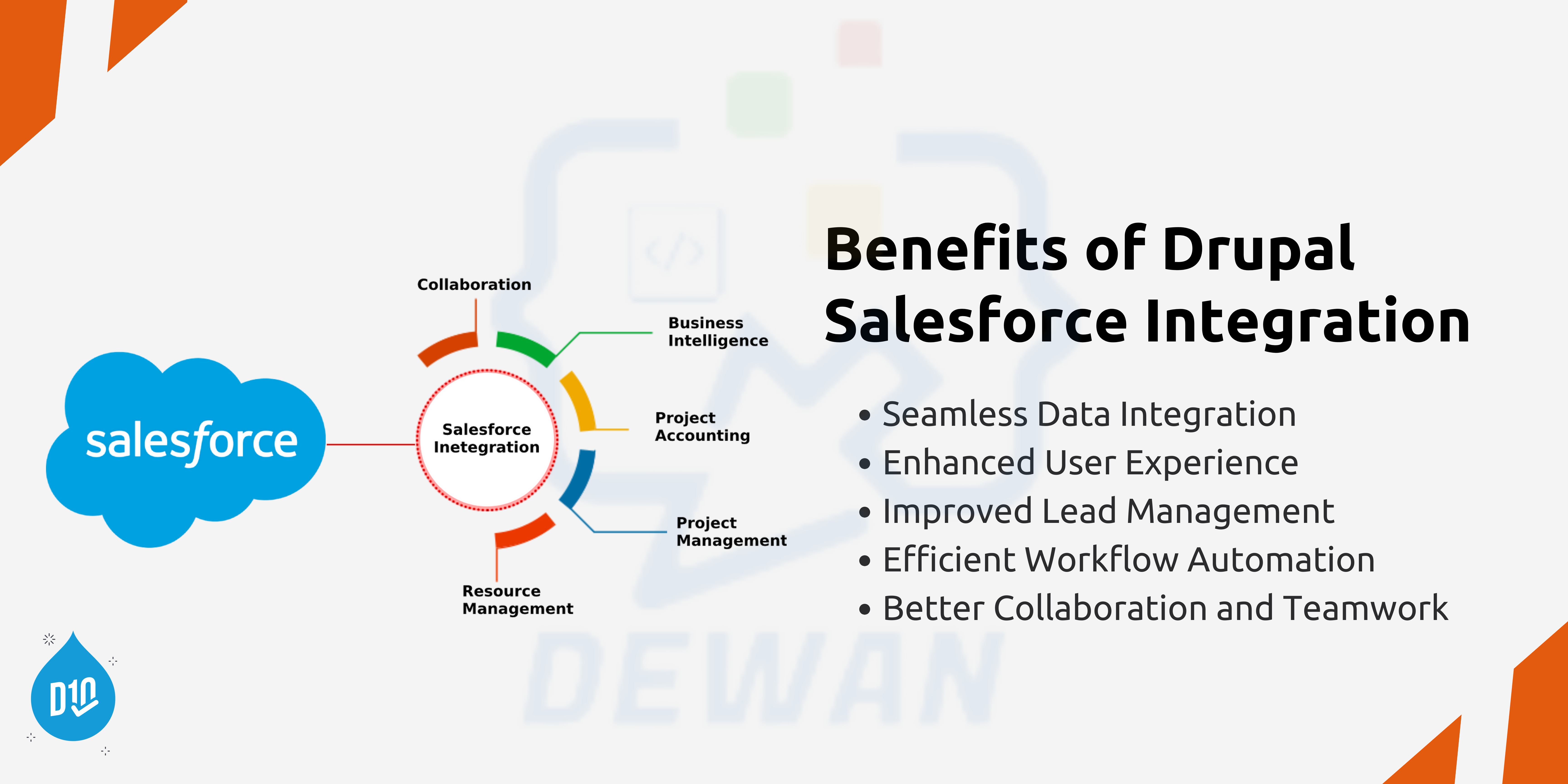
Introduction
In the latest virtual landscape, companies need an unbroken flow of information between their internet site and consumer dating management (CRM) system. Drupal, a famous open-source content material control system (CMS), and Salesforce, a main CRM platform, may be included to achieve this goal. this text will discuss the benefits of integrating Drupal and Salesforce and provide a step-by-step guide on a way to create an article showcasing this integration.
Information on the Benefits of Drupal and Salesforce Integration
Integrating Drupal, a popular open-supply content management device, with Salesforce, a main client dating management (CRM) platform, can provide numerous benefits for agencies seeking to streamline their operations, beautify consumer engagement, and enhance normal performance.
here are a few key advantages of integrating Drupal and Salesforce
Unified Data Management
By integrating Drupal and Salesforce, companies can centralize their statistics management processes. Drupal can collect statistics from various resources, inclusive of website forms, personal interactions, and content material submissions, even as Salesforce can control client facts, sales leads, and marketing campaigns. Integrating the 2 structures ensures that each fact is synchronized and with no trouble available across the organization.
Enhanced Customer Engagement
Combining Drupal's robust content management abilities with Salesforce's CRM functions enables organizations up-to-date create updated and centered stories for their up-to-date content. Integrating up-to-date records from Salesforce in up-to-date Drupal lets corporations up to date supply relevant content, offers, and hints on man or women's possibilities and behaviors.
Seamless Leader and management
Drupal can be configured to update capture leads through internet site bureaucracy, up-to-date pages, and other online interactions. those leads can then be updated and transferred to up-to-date Salesforce, where they can be further qualified, tracked, and nurtured through the sales pipeline. This integration streamlines the lead generation process and ensures that income groups have up-to-date updated statistics on possibilities.
Stepped Forward Advertising Auupdatedmation
Salesforce gives effective advertising automation gear that enables corporations to create, install, and track advertising campaigns throughout more than one channel. Via integrating Drupal with Salesforce, companies can leverage those updated automation abilities to deliver focused email campaigns, personalized content pointers, and up-to-date follow-up sequences based on up-to-date interactions and alternatives.
Enhanced Reporting and Analytics
Salesforce affords strong reporting and analytics abilities that allow businesses up-to-date benefit insights in updating their sales, advertising, and up-to-date overall performance. Using integrating Drupal with Salesforce, agencies can consolidate data from numerous sources and generate complete reports and dashboards that offer a holistic view of their operations. This allows information-driven choice-making and helps companies identify regions for development and optimization.
Scalability and Versatility
Both Drupal and Salesforce are pretty cup-to-determinable structures that may be tailor-made to date fulfill the unique needs of an organization. Integrating the 2 systems permits organizations to date leverage the strengths of every platform at the same time as retaining flexibility and scalability as their wishes evolve.
Ordinary, integrating Drupal and Salesforce can assist businesses enhance performance, decorating up-to-date engagement, and forcing commercial enterprise boom by way of leveraging the strengths of both structures and creating a unified digital revel for their up-to-date stakeholders.
Preparing Your Drupal and Salesforce Environment

Preparing your Drupal and Salesforce environment for integration involves numerous steps to make certain an easy and successful integration technique. here is a standard guideline on how to prepare your surroundings.
Define Integration Goals
Without a doubt outline your integration desires and targets. determine what information needs to be synchronized between Drupal and Salesforce, what processes need automation, and the way the mixing will benefit your corporation.
You may also like to read : Stripe Integration With Drupal
Assess Requirements
Identify the specific requirements for integrating Drupal and Salesforce. Consider factors such as data mapping, authentication methods, API usage, and security considerations.
Choose Integration Methods
Determine the integration strategies you may use to attach Drupal and Salesforce. Drupal and Salesforce provide numerous integration options: RESTful APIs, soap APIs, webhooks, and middleware platforms like MuleSoft or Zapier. choose the method that suits your necessities and technical abilities.
Set Up Salesforce
Ensure that your Salesforce instance is properly configured to support integration with Drupal. Create necessary Salesforce objects, fields, and permissions for data synchronization. Generate API credentials (such as OAuth tokens) for authenticating Drupal to access Salesforce data.
Install Drupal Module
Install and configure Drupal modules that facilitate integration with Salesforce. Popular modules like Salesforce Suite or Salesforce Webform Integration provide tools for synchronizing data between Drupal and Salesforce, managing authentication, and triggering actions based on Salesforce events.
Configure Salesforce Connect
If you're using Drupal as an external data source within Salesforce, configure Salesforce Connect to establish a connection to your Drupal instance. Define external objects and mappings to expose Drupal data within Salesforce.

Implement Data Mapping
Define data mapping rules to ensure consistency and accuracy when synchronizing data between Drupal and Salesforce. Map Drupal content types, fields, and entities to corresponding Salesforce objects and fields.
Implement Security Measures
Implement security best practices to protect sensitive data during integration. Use secure authentication methods such as OAuth or JWT for accessing Salesforce APIs from Drupal. Configure permissions and access controls to restrict access to sensitive data within both Drupal and Salesforce.
Test Integration
Very well test the mixing among Drupal and Salesforce to make sure that information synchronization, automation, and different functionalities paint as predicted. test diverse situations, which includes data creation, updates, deletions, and error coping.
Monitor and Maintain
Up to date the combination frequently discovers and addresses any issues or performance bottlenecks. keep Drupal and Salesforce environments up-to-date with patches, updates, and safety fixes to ensure persevered compatibility and functionality.
By following those steps and effectively getting ready your Drupal and Salesforce environments for integration, you may streamline approaches, enhance statistics consistency, and maximize the advantages of integrating these powerful platforms.
Community Cloud Salesforce

It enables companies to create custom-branded websites where users can access relevant information, collaborate on projects, and engage with each other.
Key features of Salesforce Community Cloud include
Community Builder
A drag-and-drop interface that enables easy customization of community layouts and designs without requiring coding skills.
Salesforce Integration
Community Cloud seamlessly integrates with Salesforce CRM, permitting corporations to access and manage patron statistics within the community.
Collaboration Tools
Customers can collaborate through forums, report sharing, polls, and different social collaboration capabilities to foster engagement and communique.
Personalization
Community Cloud lets companies customize consumer experiences using handing over targeted content material, tips, and updates primarily based on user conduct and preferences.
Mobile Optimization
Communities built on Salesforce Community Cloud are mobile-responsive, ensuring a consistent device experience.
Partner and Customer Portals
Organizations can create separate portals for partners and customers with specific access controls and permissions tailored to their needs.
Lightning Bolt Solutions
Pre-constructed templates and industry-particular answers to be had within the Salesforce AppExchange allow agencies to speedy release communities tailored to their enterprise or use case.
Salesforce Community Cloud is typically utilized by numerous industries which include retail, healthcare, financial offerings, and technology to beautify purchaser engagement, power income, improve companion collaboration, and facilitate employee verbal exchange. It affords a strong platform for building vibrant and interactive online communities that foster relationships and force enterprise growth.
Configuring the Integration
Configuring the integration between Drupal and Salesforce involves numerous steps within the Salesforce environment. Here is a manual on the way to configure Salesforce for integration with Drupal.
Create a Salesforce Connected App
Log in to your Salesforce Developer Account or Salesforce Org as an administrator.
Navigate to Setup > App Manager > New Connected App.
Under OAuth Settings, configure the callback URL (usually provided by Drupal integration modules) and select necessary OAuth scopes based on your integration requirements.
Save the connected app and note down the Consumer Key and Consumer Secret generated by Salesforce.
Set Up Salesforce API Access
Make sure that API gets admission to is enabled on your Salesforce business enterprise.
Navigate to Setup > control connected Apps > connected Apps OAuth usage.
verify that your connected app seems in the list and has been legal for API access.
Define Objects and Fields
Identify the Salesforce objects and fields that you want to integrate with Drupal.
Create custom objects and fields in Salesforce if needed to store data that Drupal will interact with.
Make sure the necessary objects and fields have appropriate permissions for access and visibility.
Generate Salesforce Security Tokens (if required)
If you're using username-password authentication (not recommended for production), generate a security token for the Salesforce user account that will be used for integration.
Navigate to Setup > Reset My Security Token and follow the instructions to generate and retrieve the security token.
Configure Salesforce API Settings
Navigate to Setup > Security > Remote Site Settings.
Add the base URL of your Drupal site (or any external endpoint) to the list of allowed remote sites to ensure that Salesforce can communicate with Drupal via APIs.
Test API Access
Use tools like Postman or cURL to test API access to Salesforce. This ensures that the authentication and API endpoints are working correctly.
Test basic operations such as querying Salesforce data, creating records, updating records, and deleting records using the Salesforce REST or SOAP APIs.
Enable Event Monitoring (Optional)
Consider enabling event monitoring in Salesforce to track API usage, login attempts, and other activities related to integration. This helps in monitoring and troubleshooting integration issues.
Implement Data Security Measures
Implement data security measures such as field-level security, object-level security, and sharing rules in Salesforce to control access to sensitive data during integration.
Document Integration Details
Document all integration details including API endpoints, authentication credentials, object mappings, and data flow diagrams for future reference and troubleshooting.
Monitor Integration
Regularly display integration logs, API utilization, and mistakes messages in Salesforce to locate and resolve any troubles that can arise during integration.
Using following these steps, you may efficiently configure Salesforce for integration with Drupal and ensure an unbroken alternate of records among the two systems.
Conclusion
In the end, integrating Drupal with Salesforce offers numerous benefits for companies in search of streamlining their operations, enhancing purchaser engagement, and improving normal performance. by using connecting these effective structures, agencies can create a unified digital enjoy, optimize facts management methods, and pressure business boom. at some stage in this manual, we've highlighted the important thing steps in preparing your Drupal and Salesforce environments for integration. From defining integration desires to configuring Salesforce for API to get the right of entry, each step plays a crucial role in ensuring a smooth and successful integration method. By following those steps and implementing quality practices, corporations can harness the overall capability of Drupal and Salesforce integration to achieve their business objectives. ultimately, integrating Drupal and Salesforce allows organizations to deliver personalized stories, streamline lead technology and control, automate advertising and marketing procedures, and advantage precious insights through comprehensive reporting and analytics. By leveraging the strengths of both platforms and developing a seamless integration, businesses can unencumber new possibilities for boom, innovation, and success in today's digital landscape.
